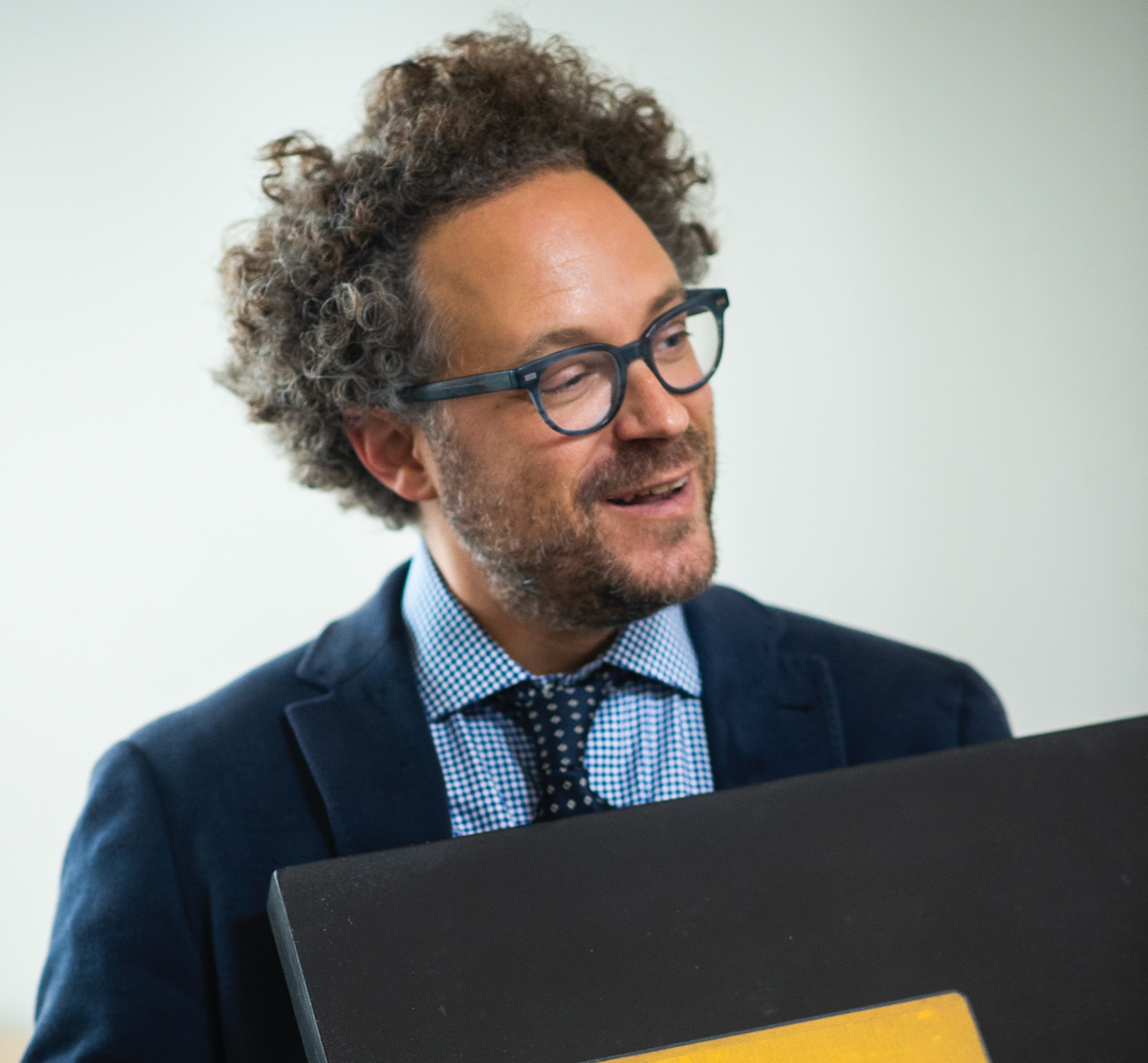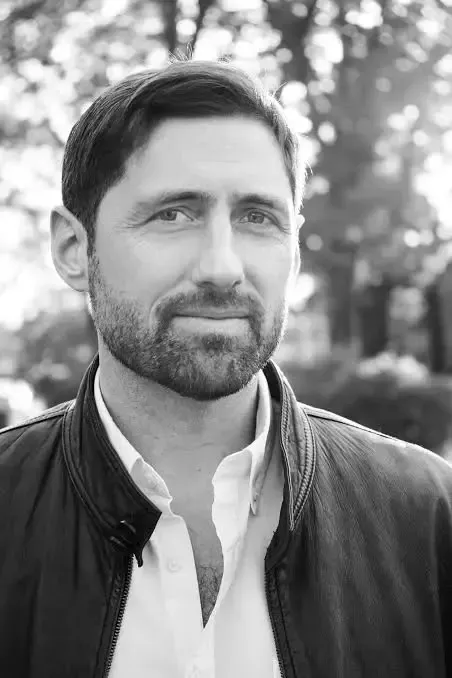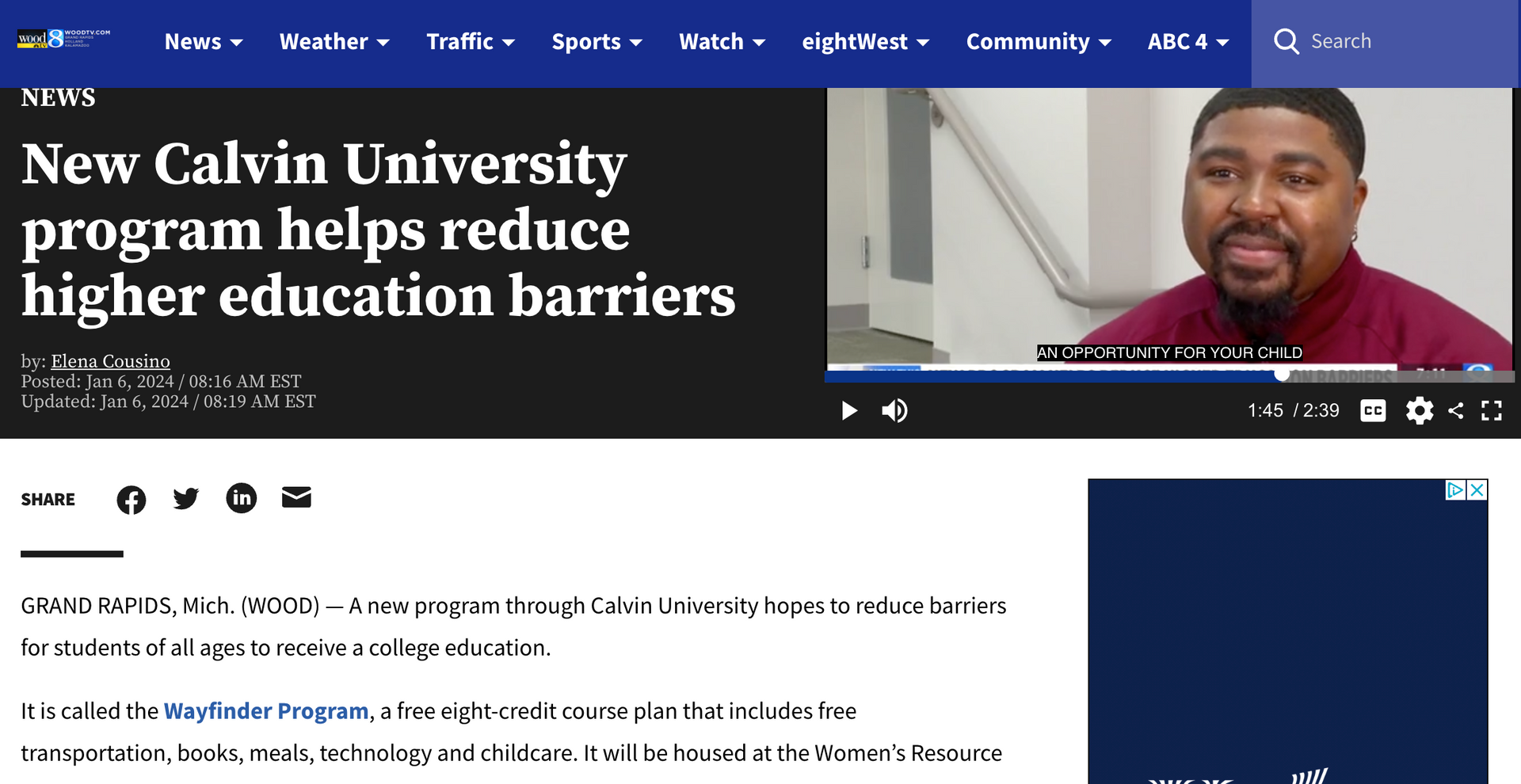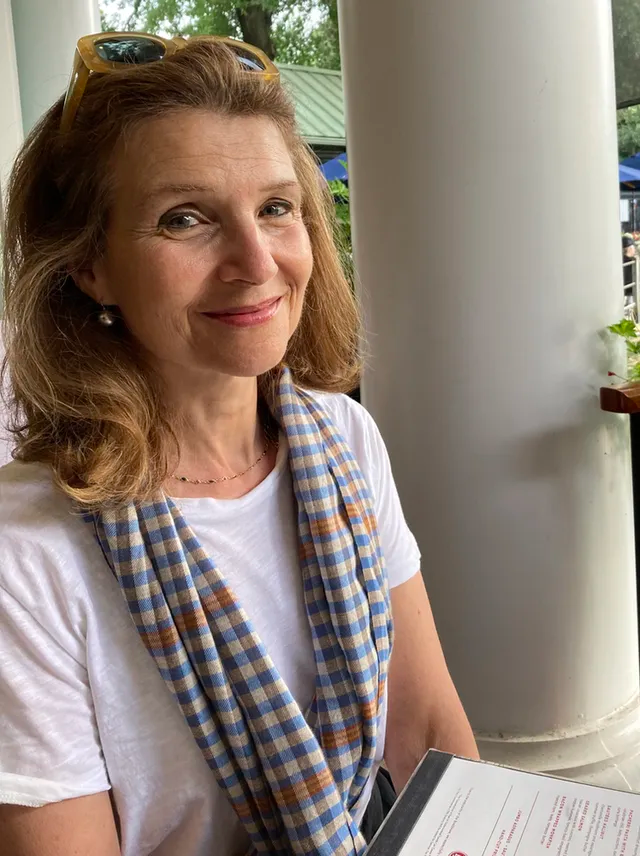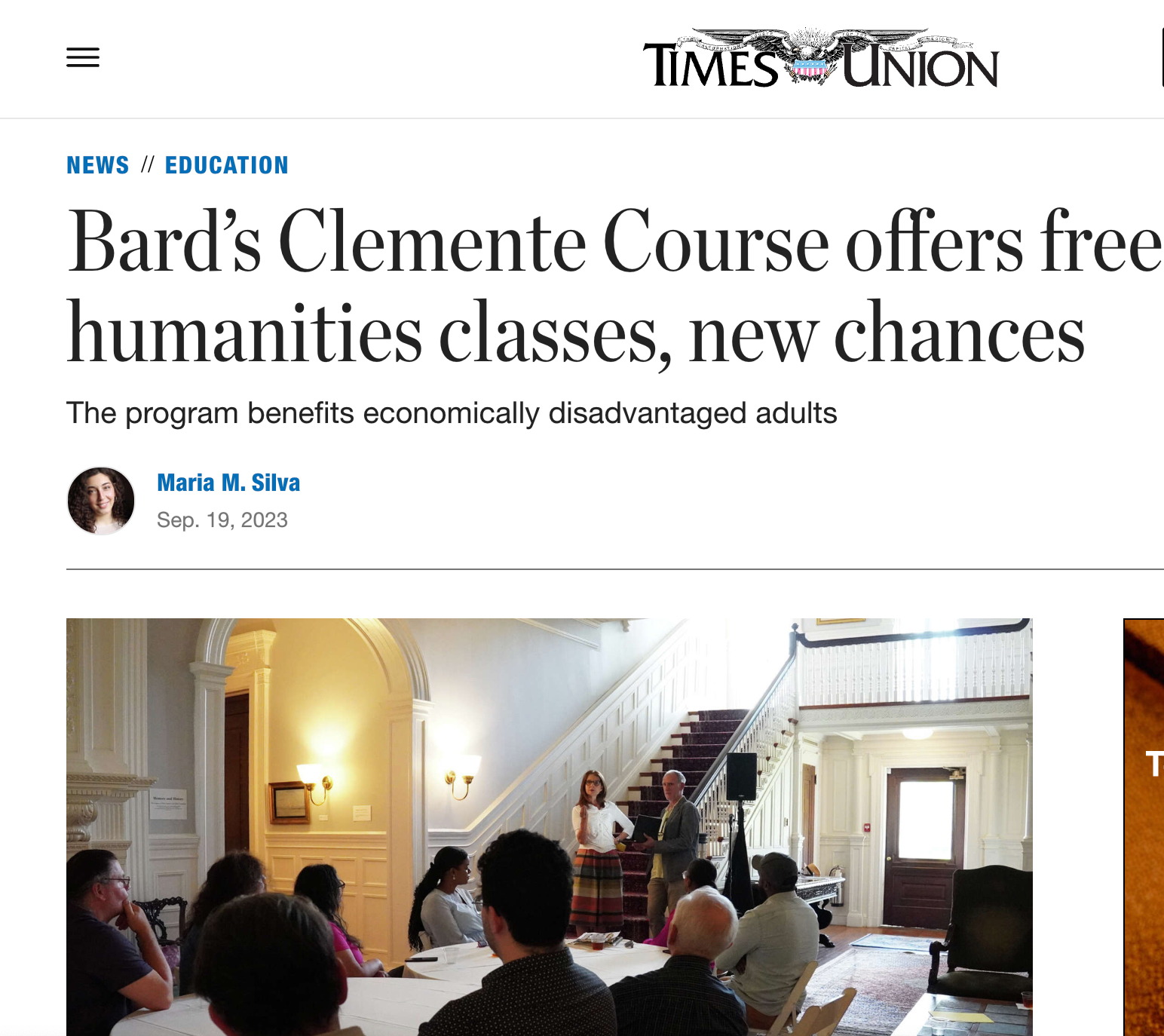Washington Post Features Clemente
Excerpt from David Montgomery, "Trump wants to kill federal arts funding. What difference would that make?" The Washington Post
Photograph by Bruce DeBoer for Washington Post
The wind is up in Wilson, N.C. Giant pinwheels and propellers start spinning atop tall and spindly kinetic sculptures called whirligigs, which have been erected on a village green being developed into Whirligig Park. The rotating wheels drive chains, belts and shafts that, in turn, set in motion whimsical characters and shapes. Little bicycle riders and unicyclists pedal and wave, helicopters hover, birds flap their wings, fighter planes change course.
The fantastic contraptions have been fashioned from the discard pile of American civilization. A freshly painted blue fan, 19 feet in diameter, spins majestically thanks to the graceful repurposing of the rear axle of a truck, while another big pinwheel is adorned with 96 shiny metal milkshake cups. Vollis Simpson, the junkyard artist who built these figures, worked from a palette that also included ...
scrap metal, bicycle wheels, attic ventilators, hubcaps, brake disks, side-view mirrors, light fixtures and highway signs. His day job was moving houses and hauling heavy machinery. He never threw away anything because, as he used to say, “Next week you’ll need it.”
Long before the National Endowment for the Arts, or anybody else, thought his “windmills,” as he called them, were fit for a city park, he erected them on his family’s land out in the country. The effect was so surreal that the grove became a destination that teenage joyriders dubbed Acid Park.
“Back when I started this mess you never heard of this word ‘art,’ ” Simpson, who died in 2013 at 94, once said. “I’m just an old country boy.” So he was stunned, and a bit tickled, when his whirligigs were called upon to help save Wilson’s ailing downtown.
Much as a whirligig is a meditation on cause and effect, on the way consequence builds upon consequence, Whirligig Park fits within a larger web of chain reactions rippling through the nation. As the Trump administration proposes next fiscal year to eliminate four pots of federal funding for culture — the National Endowment for the Arts ($148 million last year), the National Endowment for the Humanities ($148 million), the Corporation for Public Broadcasting ($445 million) and the Institute of Museum and Library Services ($230 million) — communities across the country are left to ponder what difference that would make.
The total money at stake at the four agencies — about $970 million — is a drop in the $3.9 trillion federal budget. That’s a data point that can be argued both ways: Arts advocates say the cuts would scarcely reduce the deficit but would cripple the nation’s cultural life. Budget hawks say the multibillion-dollar culture industry is so well-endowed by philanthropic elites that the comparatively minuscule federal contribution would not be missed.
After President Trump released his “Budget Blueprint to Make America Great Again” in March, the response was studded with dire assertions from defenders of the agencies. Meanwhile, some old Washington hands noted that past threats to hobble these agencies have always failed. (Trump’s detailed budget proposal for fiscal 2018, released in May, would give the four agencies a total of $124 million to fund an orderly shutdown.) What was lacking in the discussion, it seemed to me, was a closer look at how these federal dollars reverberate in the lives of communities and individuals — if they do at all.
...
"What do you see here?" asks the Harvard historian, moonlighting in a basement classroom of the Codman Square Health Center, in a working-class section of Boston's Dorchester neighborhood. He keeps asking simple questions like that, which make the answers seem not so obvious, which reminds the students — nearly all middle-aged black women — of Socrates, whom they read last semester. They are looking at photographs taken by the crusading journalist Jacob Riis more than a century ago, pictures of immigrants crammed into tenements in Lower Manhattan.
“Why do you think Riis took this photograph?” Timothy Patrick McCarthy, the professor, continues, selecting another image.
The students inventory what they see: a seated woman holding a swaddled child on her lap, her eyes cast upward. Beside her is a ladder, and she’s surrounded by buckets, barrels, bundles, a man’s hat on the wall.
“It looks like slavery,” says a student.
“He’s certainly relating this to that,” McCarthy says, then adds: “Those of you who are religious, have you ever seen an image like this?”
“Madonna and child?” asks student Phyllis James.
“Madonna and child!” says McCarthy.
An image of Michelangelo’s “Pieta” flashes on the screen.
“This could easily be read as a sacred representation, where the hat is not literally a man, or a man’s hat; it’s God,” McCarthy continues. “It’s the thing that’s unseen. He captures her looking up, directly at what looks like the hat. Could she be praying? Is this a ladder to heaven? Is this upward mobility in terms of class? ... She isn’t just an immigrant woman with a baby. She also represents something.”
He proceeds to his larger point: “That’s what we do, that’s what this course is about, when we’re thinking about language. Things operate in both the literal and the metaphorical.”
With that McCarthy has handed over another of what his co-professor Jack Cheng calls “the keys to the culture” to people who never had access to the full set that comes with a good college education. In a STEM-obsessed society, the Clemente Course in the Humanities, as these sessions are known, takes an unabashed Great Books approach to education. They were devised two decades ago by the late social critic Earl Shorris, whose central insight was that what keeps the underclass down is being forced to focus so much on the daily struggle that there’s no room for civic engagement. The way to make room, said Shorris, is instruction in the humanities.
Now there are 31 Clemente Courses given around the country. The free Dorchester course, one of five in Massachusetts, receives about $50,000, or half its annual cost including in-kind services, from Mass Humanities. The state humanities council, in turn, gets half its funding from the National Endowment for the Humanities. “Without the NEH money, we could not continue all of them,” says David Tebaldi, executive director of Mass Humanities. “There’s nothing that we do that has the profound impact on individuals that the Clemente Course does.”
Among the requirements for admission, the students cannot have graduated from college and must come from households getting by on less than what is considered a living wage in the Boston area, or about $13.42 an hour for a single person. In two semesters, meeting twice a week, they take classes in moral philosophy, literature, American history, art history and writing.
They read Plato, Aristotle, Kant and Nietzsche; Homer, Dante, Shakespeare, Virginia Woolf, Zora Neale Hurston, Langston Hughes, Junot Diaz; they survey art from Mesopotamia through Picasso, Pollock and Warhol. The work is demanding, and dropout rates can be as high as 50 percent, but those who graduate receive six credits from Bard College in New York state that can be transferred to other institutions. A consultant’s study requested by private funders and paid for with a foundation grant found that, 18 months after graduation, two-thirds of Massachusetts Clemente graduates had taken college classes, and many reported volunteering for political campaigns for the first time and paying more attention to public affairs.
After class, I ask Phyllis James, the student who made the Madonna connection, why she was taking the class. At 50, she says she was “maxed out” in her work as an administrative assistant for the state courts, unless she got more education. “I always wanted to finish my degree, but you get involved with work, family. Time flies,” she says. “This is encouraging me and giving me a doorway to go the next step to achieve my goals.” Like the woman in Riis’s photo, she sees the Clemente Course as her ladder up.
Carl Chandler, 68, an alumnus, told me about being the keynote speaker at his Clemente graduation a few years ago. During his speech he explained to the audience that graduation day was the anniversary of when he was forced into a homeless shelter for a brief time, his lowest moment. Taking the course was part of his comeback. “I’m always going to be poor,” he said to me, “but that’s no excuse not to be informed, to speak up, to try and better myself. Clemente helps you get on that path and stay on that path. It helps you think more and think better.”
Waldo Aguasvivas, 28, graduated in 2013. He had dropped out of high school and got his GED as he was beginning the Clemente Course. “Courses change people’s lives,” he says. “It changed my view on college, that I wanted more, that I wanted to know more. You can talk to anybody, and that feels good, not to be lost in the classroom or not to be lost when you’re talking to somebody and they’re talking about Aristotle, and you don’t even know who that is because you haven’t given yourself the time or just you never came across it.”
Aguasvivas carried his six Clemente credits to Roxbury Community College, then enrolled at Suffolk University. He’s on track to graduate next semester with a degree in applied legal studies. Next for him is law school, he says. “I never even knew what college credits were. Look at me now.”
